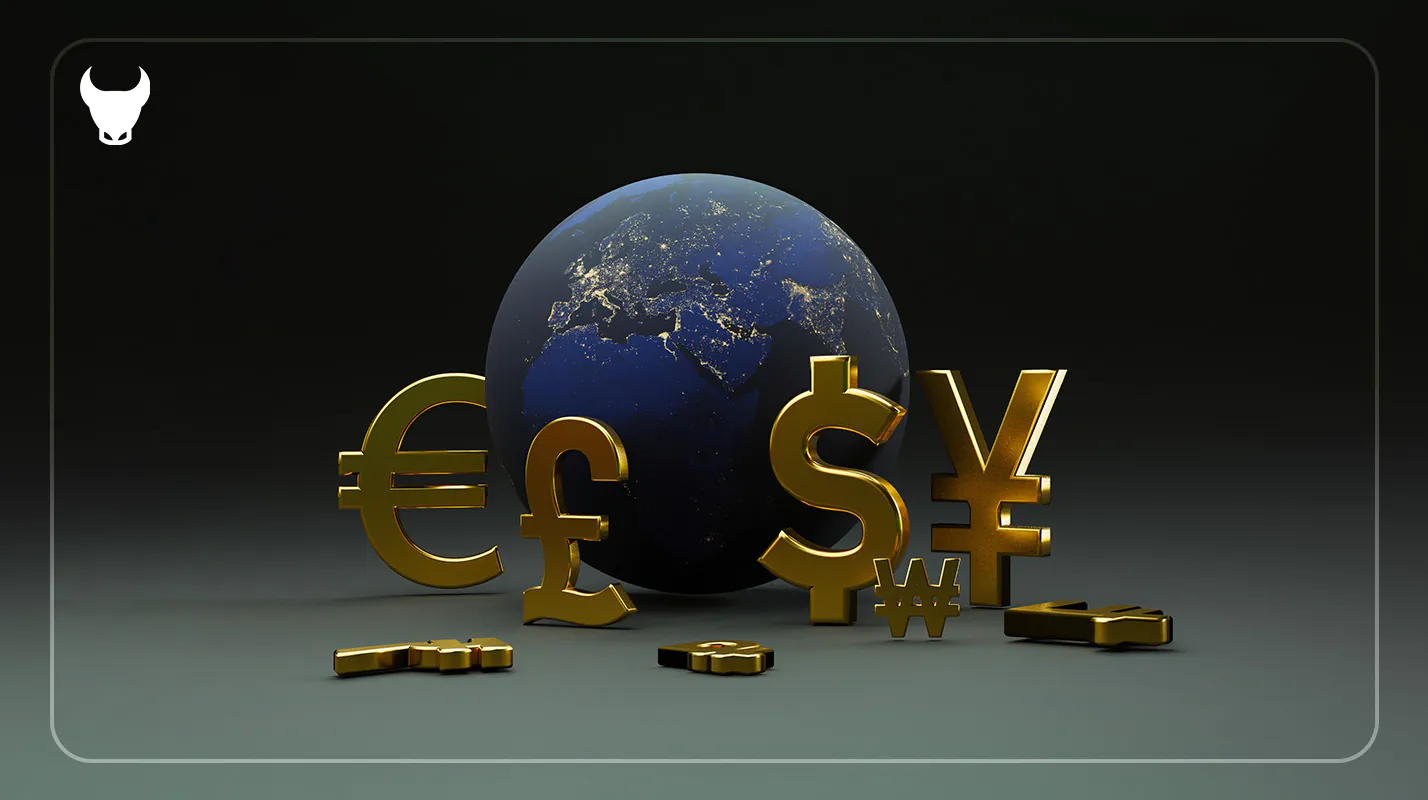Understanding this pair is crucial for traders. In this guide, we will explore the dynamics of USDJPY, its significance, factors influencing its movements, and strategies for trading it effectively.
Whether you’re looking to diversify your trading portfolio or gain insights into global economic trends, this guide will equip you with the knowledge to navigate the USDJPY currency pair confidently.
What is a Currency Pair?
A currency pair expresses the value of one currency in terms of another. In forex, currencies are always traded in pairs, meaning you buy one currency while selling another. The first currency in the pair is the base currency, and the second is the quote currency. For example, in the USD/JPY pair, USD is the base currency, and JPY is the quote currency.
The value of a currency pair shows how much of the quote currency is needed to buy one unit of the base currency. So, if the USD/JPY pair is quoted at 110, it means 1 US Dollar is equal to 110 Japanese Yen. This relationship helps traders understand the relative strength of one currency against another.
There are three main types of currency pairs:
1. Major Pairs:
These include the most traded currencies, such as EUR/USD, GBP/USD, and USD/JPY.
2. Minor Pairs:
These pairs do not include the US Dollar but involve other major currencies, like EUR/GBP or AUD/JPY.
3. Exotic Pairs:
These involve one major currency and one currency from a smaller or emerging economy, such as USD/TRY (US Dollar/Turkish Lira).
What is the USDJPY Currency Pair?
The USDJPY currency pair represents the exchange rate between the US Dollar (USD) and the Japanese Yen (JPY). In this pair, the USD is the base currency, and the JPY is the quote currency. This means the value of the pair shows how many Japanese Yen are needed to purchase one US Dollar.
The USDJPY pair is one of the most traded currency pairs in the Forex market. It involves two of the world’s largest economies: the United States and Japan. The high trading volume ensures liquidity, meaning traders can easily buy and sell without significantly affecting the price.
Several factors influence the value of the USDJPY pair, including economic indicators, interest rates, and geopolitical events. For example, changes in interest rates set by the Federal Reserve (US) and the Bank of Japan can impact the exchange rate. Economic data such as GDP growth, employment figures, and inflation rates can also affect the pair’s value.
Traders use the USDJPY pair to speculate on the economic health and monetary policies of the US and Japan. The pair is also a benchmark for global economic trends, reflecting the economic relationship between the Western and Eastern worlds.
The exchange rate of the USD/JPY pair is influenced by various factors, including interest rate differentials between the Federal Reserve and the Bank of Japan, economic data releases, and geopolitical events. Traders closely monitor these factors to make informed decisions about buying or selling the pair.
Why USDJPY is Considered a Major Pair?
The USD/JPY currency pair is considered a major pair in the forex market for several reasons. It involves two of the world’s largest economies: the United States and Japan. The US Dollar (USD) is the world’s primary reserve currency, while the Japanese Yen (JPY) is the most traded currency in Asia. This makes the USD/JPY pair highly liquid, meaning it can be bought and sold easily without causing significant price changes.
Another reason is the economic significance of both countries. The US and Japan have substantial influence on global trade and finance, and their economic policies can impact the global market. For instance, changes in interest rates by the Federal Reserve or the Bank of Japan can lead to significant movements in the USD/JPY exchange rate.
Additionally, the USD/JPY pair is often seen as a barometer for global risk sentiment. During times of economic uncertainty, investors tend to flock to safe-haven currencies like the Japanese Yen, causing it to appreciate against the US Dollar. Conversely, in times of economic stability, the US Dollar may strengthen as investors seek higher returns.
Overall, the combination of high liquidity, economic importance, and sensitivity to global risk factors makes the USD/JPY a major currency pair in the forex market.
What is The History of USD/JPY?
The history of the USD/JPY currency pair reflects economic changes and global events. In the early 1970s, the exchange rate was fixed under the Bretton Woods system. When the system collapsed in 1971, the rate became free-floating, leading to significant fluctuations.
During the 1980s, the pair experienced volatility due to economic policies and trade imbalances between the US and Japan. The Plaza Accord of 1985, an agreement to depreciate the US Dollar, caused the Yen to appreciate sharply against the Dollar.
The 1990s saw Japan’s economic bubble burst, leading to stagnation and deflation. This affected the USD/JPY rate, with the Yen strengthening as Japan’s economy struggled to recover.
In the 2000s, the pair continued to be influenced by economic policies, interest rate changes, and global financial crises. The 2008 financial crisis led to a flight to safety, with investors flocking to the Yen as a safe-haven currency, causing the USD/JPY rate to drop.
In recent years, the USD/JPY pair has been impacted by monetary policies from the Federal Reserve and the Bank of Japan, geopolitical events, and global economic trends. The pair remains one of the most traded in the Forex market, reflecting the ongoing economic relationship between the US and Japan.
Why USDJPY is Important in Forex? Why Trade USD/JPY Currency Pair?
The USDJPY currency pair is significant in the Forex market, representing the exchange rate between the US Dollar (USD) and the Japanese Yen (JPY). Here are some reasons why USDJPY is important and why traders choose to trade this pair:
1. High Liquidity:
The USDJPY pair has a large trading volume, ensuring traders can easily enter and exit positions without significantly affecting the price. This also means tighter spreads, reducing trading costs.
2. Economic Indicators:
The USDJPY pair is influenced by economic indicators from both the United States and Japan, such as interest rates, GDP growth, employment data, and inflation rates. Traders use this information to make informed decisions and predict potential movements in the exchange rate.
3. Safe-Haven Status:
The Japanese Yen is often considered a safe-haven currency. During global economic uncertainty or market volatility, investors flock to the Yen, causing the USDJPY exchange rate to fluctuate. This makes the pair an important indicator of market sentiment and risk appetite.
4. Global Economic Impact:
The USDJPY pair reflects the economic relationship between the Western and Eastern worlds. Changes in the exchange rate can indicate broader economic trends and shifts in global trade dynamics, making the pair valuable for traders looking to understand and capitalize on global economic movements.
5. Technical Analysis Opportunities:
Due to its high trading volume and liquidity, the USDJPY pair is well-suited for technical analysis. Traders use various technical indicators and chart patterns to identify potential trading opportunities and develop effective strategies.
6. Diverse Trading Strategies:
The USDJPY pair offers opportunities for a wide range of trading strategies, from short-term scalping to long-term position trading. Its relatively stable nature and predictable movements make it an attractive choice for both novice and experienced traders.
Factors Influencing USDJPY Exchange Rate
Several factors influence the USD/JPY exchange rate:
1. Interest Rate Differentials:
The difference in interest rates set by the Federal Reserve (Fed) and the Bank of Japan (BoJ) plays a significant role. Higher interest rates in the US compared to Japan can attract investors to the USD, increasing its value against the JPY.
2. Economic Indicators:
Economic data such as GDP growth, employment rates, and inflation figures from both countries can impact the exchange rate. Strong economic performance in the US or Japan can lead to currency appreciation.
3. Geopolitical Events:
Political stability and international relations can affect investor confidence. Events like elections, trade negotiations, and geopolitical tensions can lead to fluctuations in the USD/JPY exchange rate.
4. Market Sentiment:
Investor perception and market sentiment can drive currency movements. During times of global uncertainty, the Japanese Yen often acts as a safe-haven currency, leading to its appreciation against the US Dollar.
5. Central Bank Policies:
Actions and statements from the Fed and the BoJ, such as changes in monetary policy or interventions in the forex market, can significantly influence the USD/JPY exchange rate.
6. Trade Balances:
The trade balance between the US and Japan can also impact the exchange rate. A trade surplus in Japan or a trade deficit in the US can lead to a stronger JPY against the USD.
How to Analyze USD/JPY Currency Pair?
Analyzing the USD/JPY currency pair involves understanding both fundamental and technical factors that influence its movements. Here’s a simple guide to help you get started:
Fundamental Analysis of USD/JPY Trading
Economic Indicators:
Keep an eye on key economic data from the US and Japan, such as GDP growth, employment figures, inflation rates, and consumer sentiment. Strong economic data from either country can impact the USD/JPY exchange rate.
Interest Rates:
Monitor the interest rate decisions of the Federal Reserve (US) and the Bank of Japan. Changes in interest rates can significantly affect the value of the USD/JPY pair.
Geopolitical Events:
Stay informed about political developments and geopolitical tensions. Events like trade disputes or changes in government policies can cause fluctuations in the exchange rate.
Market Sentiment:
Understand the overall market sentiment and risk appetite. During times of economic uncertainty, investors may seek safe-haven assets like the Japanese Yen, affecting the USD/JPY rate.
Technical Analysis of USD/JPY Trading
Price Charts:
Study price charts to identify trends and patterns. Look for support and resistance levels, which can indicate potential entry and exit points for trades.
Technical Indicators:
Use technical indicators such as moving averages, Relative Strength Index (RSI), and Moving Average Convergence Divergence (MACD) to analyze price movements and identify potential trading opportunities.
Chart Patterns:
Recognize common chart patterns like head and shoulders, double tops and bottoms, and triangles. These patterns can provide insights into potential future price movements.
Combining Both Analyses
Correlation:
Combine fundamental and technical analysis to get a comprehensive view of the USD/JPY pair. For example, if economic data supports a bullish outlook and technical indicators show an upward trend, it may be a good time to consider a long position.
Risk Management:
Always use risk management strategies, such as setting stop-loss orders and position sizing, to protect your investments.
By understanding and applying both fundamental and technical analysis, you can make informed decisions and improve your chances of success when trading the USD/JPY currency pair.
How to Trade USDJPY?
Trading the USD/JPY currency pair involves a combination of strategies and analysis:
Step 1: Understand the Basics
Know that USD is the base currency and JPY is the quote currency. The exchange rate shows how many Japanese Yen are needed to buy one US Dollar.
Step 2: Choose a Trading Platform
Select a reliable trading platform that offers USD/JPY trading. Look for features like real-time data, charting tools, and a user-friendly interface.
Step 3: Analyze the Market
Use both fundamental and technical analysis. Fundamental analysis involves economic indicators, interest rates, and geopolitical events. Technical analysis involves studying price charts and using indicators like moving averages and RSI.
Step 4: Develop a Trading Strategy
Create a strategy based on your analysis. Decide whether to trade short-term or long-term. Set clear entry and exit points, and determine your risk tolerance.
Step 5: Practice with a Demo Account
Practice trading with a demo account to test your strategy and get comfortable with the trading platform.
Step 6: Monitor Economic Events
Keep an eye on economic events and news that can impact the USD/JPY exchange rate, like interest rate decisions by the Federal Reserve and the Bank of Japan.
Step 7: Place Your Trade
Place your trade based on your market outlook. Decide whether to buy (go long) or sell (go short) the USD/JPY pair.
Step 8: Manage Your Risk
Use stop-loss and take-profit orders to protect your investment. These tools help limit potential losses and lock in profits.
Step 9: Review and Adjust
Regularly review your trades and adjust your strategy as needed. Learn from your successes and mistakes to improve your trading skills.
What are the Risks of Trading USD/JPY?
Trading the USD/JPY currency pair can be rewarding, but it also comes with several risks that traders should be aware of. Trading the USD/JPY currency pair comes with these risks:
Market Volatility
The USD/JPY pair can be highly volatile, with prices fluctuating rapidly due to economic data releases, geopolitical events, and market sentiment. This volatility can lead to significant gains but also substantial losses.
Economic Disparities
Differences in economic performance between the US and Japan can impact the exchange rate. Strong economic growth in the US compared to Japan can lead to a stronger USD, while economic challenges in Japan can weaken the JPY.
Interest Rate Changes
Interest rate decisions by the Federal Reserve and the Bank of Japan can cause sharp movements in the USD/JPY exchange rate. Unexpected changes in interest rates can lead to sudden market reactions, affecting your trades.
Geopolitical Tensions
Political instability and geopolitical tensions, such as trade disputes or conflicts, can influence investor confidence and cause fluctuations in the USD/JPY pair. These events are often unpredictable and can lead to sudden market shifts.
Leverage Risks
Forex trading often involves the use of leverage, which can amplify both gains and losses. While leverage allows traders to control larger positions with a smaller amount of capital, it also increases the risk of significant losses if the market moves against your position.
Liquidity Risks
Although the USD/JPY pair is highly liquid, there can be times of reduced liquidity, especially during off-market hours or major holidays. Reduced liquidity can lead to wider spreads and increased slippage, making it harder to execute trades at desired prices.
Psychological Factors
Emotional decision-making can negatively impact trading outcomes. Fear, greed, and overconfidence can lead to poor trading decisions, such as holding onto losing positions for too long or exiting profitable trades too early.
Conclusion
Understanding the USD/JPY currency pair is essential for forex trading. This guide has explored the fundamentals of the USD/JPY pair, its significance as a major currency pair, and the factors influencing its exchange rate.
By analyzing both fundamental and technical aspects, traders can make informed decisions and develop effective trading strategies. The USD/JPY pair’s high liquidity, economic importance, and sensitivity to global events make it a crucial component of the forex market.
Whether you’re a novice or an experienced trader, mastering the dynamics of the USD/JPY pair can enhance your trading success.
Stay informed, practice diligent analysis, and manage risks effectively to navigate the complexities of trading this currency pair.
FAQs
What is a FX currency pair?
What is the JPY currency pair?








